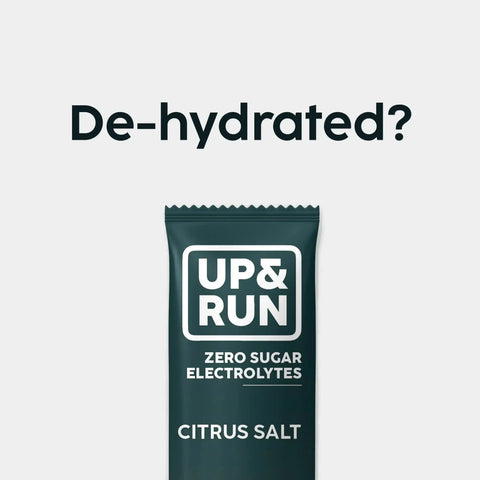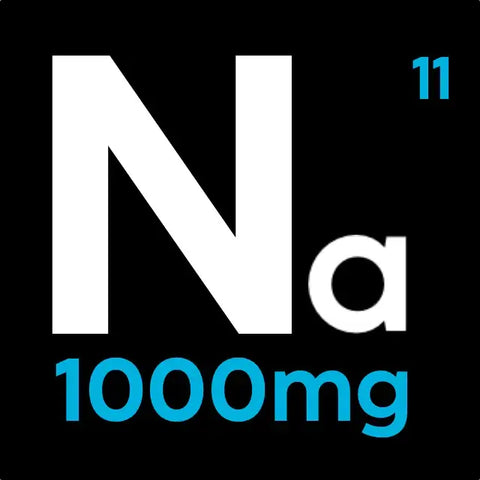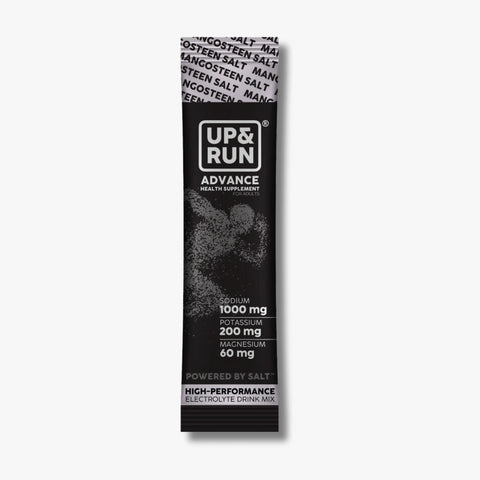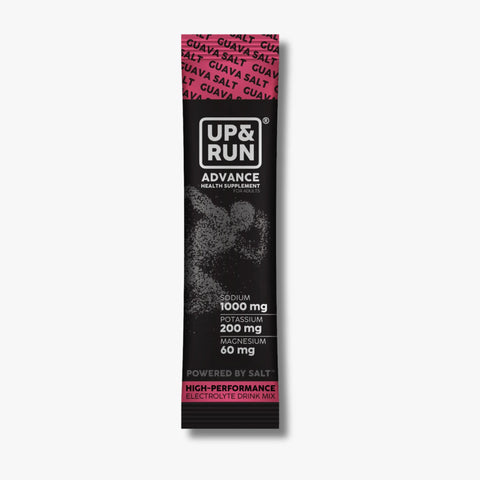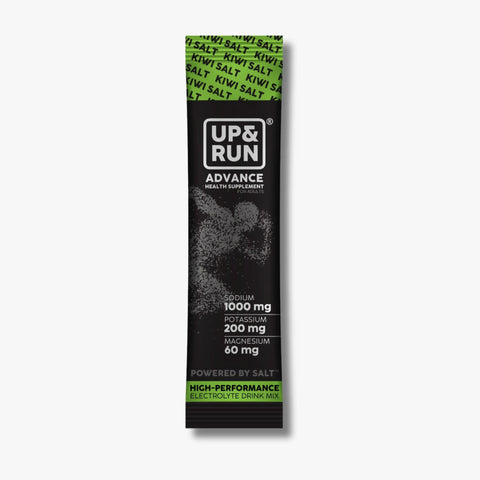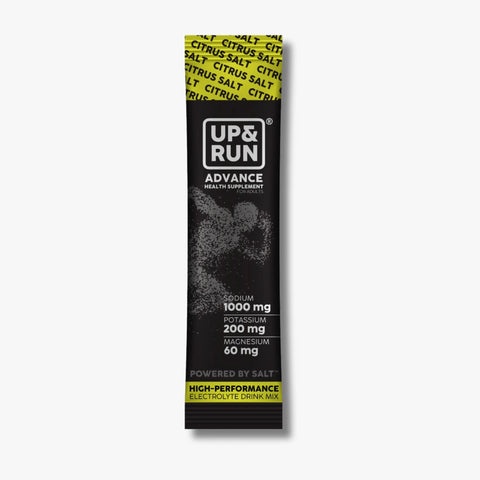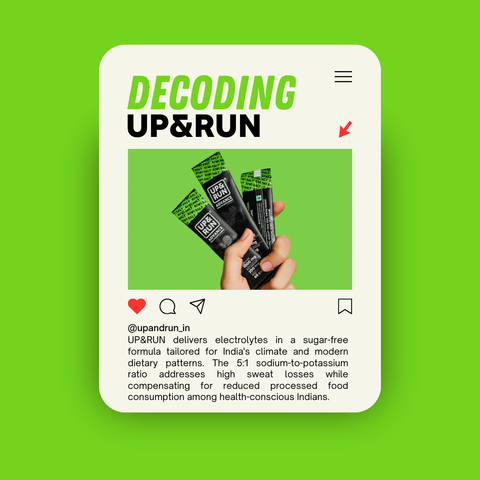
UP&RUN delivers a precisely crafted electrolyte blend featuring 1000 mg sodium, 200 mg potassium, 60 mg magnesium, and absolutely no added sugars. This thoughtfully designed electrolyte powder for hydration draws from cutting-edge research and our deep understanding of Indian athletes' and health enthusiasts' unique needs across the subcontinent's challenging environments.
From Ancient Wisdom to Modern Performance
India's diverse climate conditions – from Mumbai's humidity to Delhi's dry heat – create unique hydration challenges that generic sports drinks simply can't address. Our founders recognized that traditional Indian diets, while rich in nutrients, often fall short in providing optimal electrolyte balance, especially for active individuals following modern lifestyle patterns.
The breakthrough came when analyzing the hydration needs of Indian athletes training in various climatic zones. Whether it's a cricketer practicing under the scorching Rajasthan sun or a marathon runner in Chennai's coastal humidity, the electrolyte loss patterns were consistent yet inadequately addressed by existing solutions.
Traditional Indian practices have long recognized the importance of balance – from Ayurveda's emphasis on maintaining bodily equilibrium to the age-old practice of consuming nimbu paani (lemon water) with salt during summers. However, modern lifestyles, air-conditioned environments, and processed food consumption have disrupted these natural rhythms.
This insight led to extensive research into how Indian dietary patterns, exercise habits, and environmental factors influence electrolyte requirements. We studied everything from the hydration needs of tea garden workers in Assam to software professionals in Bangalore who spend hours in climate-controlled offices before hitting the gym.
The result? UP&RUN's scientifically-backed formula that complements rather than competes with traditional Indian nutrition wisdom.
While proper hydration is just one component of holistic wellness – alongside adequate sleep, regular exercise, strong relationships, stress management, and balanced nutrition – UP&RUN makes achieving optimal electrolyte support effortless for busy Indian lifestyles. From the early morning joggers in Delhi's Lodhi Gardens to late-night gym sessions in Mumbai's corporate district, maintaining proper hydration shouldn't be complicated.
Sodium: Your Performance Foundation in India's Climate
Every UP&RUN sachet contains 1000 mg of sodium, a crucial mineral that many Indians unknowingly need more of than they realize. This becomes particularly important for:
Heavy Sweat Loss in Indian Conditions: Athletes training in India's tropical and subtropical climates can lose 3-5 grams of sodium during intense sessions. Professional kabaddi players and cricket teams we've worked with report sodium losses of up to 8-10 grams during tournament matches in peak summer. Even recreational players during weekend cricket matches in local maidans can lose 2-3 grams of sodium in just a few hours.
Balancing Modern Indian Diets: While traditional Indian cuisine includes natural sodium sources like rock salt (sendha namak) and fermented foods like pickles and chutneys, modern urban diets often lack adequate sodium when processed foods are eliminated in favor of healthier alternatives. The shift from home-cooked meals to restaurant food, and then back to clean eating, often creates sodium gaps.
Supporting Keto and Intermittent Fasting Trends: The growing popularity of ketogenic diets and intermittent fasting among Indian fitness enthusiasts creates rapid sodium depletion, as these approaches reduce insulin levels and minimize sodium retention. This is particularly challenging during festivals when traditional eating patterns are disrupted.
Regional Dietary Variations: North Indian diets traditionally include more wheat and dairy, while South Indian diets focus on rice and coconut – each creating different baseline sodium needs. UP&RUN bridges these regional nutritional gaps.
Addressing Baseline Needs: Many Indians following contemporary wellness trends require additional sodium supplementation beyond what traditional meals provide, especially those avoiding processed foods and restaurant meals.
The key is finding your optimal intake through mindful consumption of natural salt sources in cooking, combined with UP&RUN to bridge any gaps. Your body will signal when you've achieved the right balance through improved energy and mental clarity.
The Potassium Connection: Cellular Harmony
Each UP&RUN sachet provides 200 mg of potassium, creating a 5:1 sodium-to-potassium ratio that's crucial for optimal cellular function. This ratio is especially important in India where traditional cooking methods often reduce potassium content in vegetables.
The sodium-potassium pump operates as a vital mechanism in our cellular membranes, exchanging 3 sodium ions for every 2 potassium ions. This process drives everything from muscle contractions during your morning yoga session to the neural firing that keeps you sharp during long work days or intense study sessions.
Why does UP&RUN use a 5:1 ratio instead of the cellular 3:2 ratio? Two key reasons:
Climate-Adapted Formulation: Indian environmental conditions cause higher sodium losses through perspiration, while popular dietary approaches like intermittent fasting increase sodium excretion. The monsoon season also affects mineral absorption and retention patterns.
Dietary Pattern Considerations: Indians embracing whole foods diets naturally consume less sodium than previous generations who relied more heavily on processed foods. Additionally, modern cooking methods like pressure cooking and microwave heating can reduce natural potassium content in vegetables.
This additional sodium compensates for the deficits common in health-conscious Indian communities. To support your potassium needs and cellular pump function, focus on traditional potassium-rich foods like coconut water (nariyal paani), bananas, spinach (palak), sweet potatoes, rajma (kidney beans), and various dals – with UP&RUN filling any remaining gaps.
Magnesium: The Stress-Busting Mineral
UP&RUN includes 60 mg of magnesium per sachet, addressing a mineral that's often overlooked but critically important for managing India's high-stress lifestyle.
Magnesium Malate supports energy production, DNA repair, muscle protein synthesis, quality sleep, and numerous other functions essential for peak performance. Research suggests that up to 30% of the Indian population may be magnesium-deficient, making targeted supplementation a simple yet powerful health optimization strategy. This deficiency is particularly common among urban Indians dealing with work stress, pollution, and irregular eating patterns.
The mineral becomes even more crucial during India's extreme weather conditions. High temperatures increase magnesium loss through sweat, while the stress of commuting in heavy traffic or working long hours in competitive environments depletes magnesium stores.
Like other electrolytes, prioritize magnesium-rich foods in your diet – think almonds (badam), dark leafy greens like methi and sarson ka saag, pumpkin seeds, dark chocolate, and traditional preparations like til laddu – then use UP&RUN to ensure you're meeting your daily requirements.
Strategic Exclusions: What UP&RUN Leaves Out and Why
Seven electrolytes exist in total: sodium, chloride, potassium, magnesium, calcium, phosphate, and bicarbonate. UP&RUN contains sodium, potassium, and magnesium, plus chloride through sodium chloride (table salt) and potassium chloride. Since chloride typically binds with sodium and serves similar functions, separate supplementation isn't necessary. Our bodies naturally produce bicarbonate, leaving calcium and phosphorus as the remaining considerations.
The Calcium Consideration for Indian Diets
UP&RUN doesn't include calcium because most Indians already meet the recommended daily intake (approximately 1000 mg) through traditional dairy consumption, sesame seeds, and green leafy vegetables common in regional cuisines. Indian diets are particularly rich in calcium sources – from paneer and dahi to til and ragi-based preparations.
Additionally, emerging research suggests calcium supplements may contribute to arterial calcification, potentially increasing cardiovascular disease risk – a particular concern given India's rising rates of heart disease. While some theories propose that adequate vitamin D (often deficient in Indians despite abundant sunshine) and K2 might mitigate these effects, the evidence remains inconclusive.
We chose to keep UP&RUN's formulation both simple and evidence-based, believing it's safer to obtain your daily calcium through traditional dietary sources like milk, yogurt, paneer, til (sesame), and leafy greens that have sustained Indian populations for generations.
Phosphorus: Already Abundant in Indian Cuisine
Phosphorus deficiency is extremely rare, as this mineral is abundant in the Indian food supply through sources like dairy products, legumes (dal, rajma, chana), and grains (wheat, rice). Most Indians already consume adequate or excess amounts through their regular diet. Traditional Indian meals with dal-chawal or roti combinations provide substantial phosphorus without any need for supplementation.
UP&RUN's Evidence-Based Approach for Indian Wellness
UP&RUN's research-driven ratio helps Indians optimize their intake of sodium, potassium, and magnesium while avoiding unnecessary additions that might not benefit everyone. We've designed this formulation to make healthy hydration a simple, effective component of your wellness routine, whether you're a Mumbai office worker, a Delhi student, or a fitness enthusiast in any Indian city.
Our approach respects both modern science and traditional Indian wisdom. Just as Ayurveda emphasizes balance and individual constitution (prakriti), we recognize that hydration needs vary based on your lifestyle, environment, and health goals.
We also recognize that one size doesn't fit all. That's why we encourage experimentation with homemade electrolyte solutions and adjustments based on your individual response, regional climate conditions, and activity levels. The goal is finding what works best for your unique Indian lifestyle and health goals while maintaining the convenience and precision that modern life demands.


